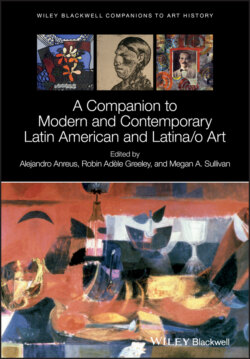Читать книгу A Companion to Modern and Contemporary Latin American and Latina/o Art - Группа авторов - Страница 29
1.5 Conclusion
ОглавлениеThe strongly Mexicanist nature of this art and its immediate historical context does not negate the strong European influences it incorporated at first and the resulting incredible spread of its effects throughout the Americas and the rest of the world, especially in places that have felt the need to develop socially driven imagery. At no point did the strongly nationalist tendencies it exhibited deny strong ties to European or North American modernism. The influence of the muralists on Works Progress Administration projects, of Siqueiros' drip experiments on Jackson Pollock, the easy translation of the recent examples of Mexican film directors into Hollywood studio culture, and the transborder force of Iturbide's images all speak of the Mexican art under consideration as more a fulcrum and intersection of international forces, a magnetic hub that attracts and then pushes back out with tremendous force a sense of artmaking that did, can, and will continue to inform and motivate a collective culture that crosses and challenges borders of all sorts.
The scholarship on Mexican art produced during and after its Revolution of 1910–1920 is reaching a certain point of comprehensiveness, at both general and highly specific levels. Art historical methods applied to it have experienced the usual turbulent ride felt by the humanities in general, zigzagging from entrenched formalism and hagiographies of the artists to revisionist social history, critical theory derived from literary studies, and by now counter developments to all of these. All of which means that any new intervention has to navigate through the successes and failures of these approaches and yet contribute something truly meaningful. I would continue to insist, however, that the outstanding center of our topic is its political content, because that period has never escaped its deeply political essence, in all of its aspects; and equally insist that the articulation of politics in artistic form not be relegated one‐to‐one, automatically, to that powerful context. How these correspondences fail to convince as often as they succeed, how art refracts rather than simply reflects history can convince us that history, after all, is that which is subjectively and arbitrarily experienced rather than objectively observed and recorded. This art continues to pose the greatest challenges and rewards to that charge, and our scholarly experience of it marks our own, present, history.10
